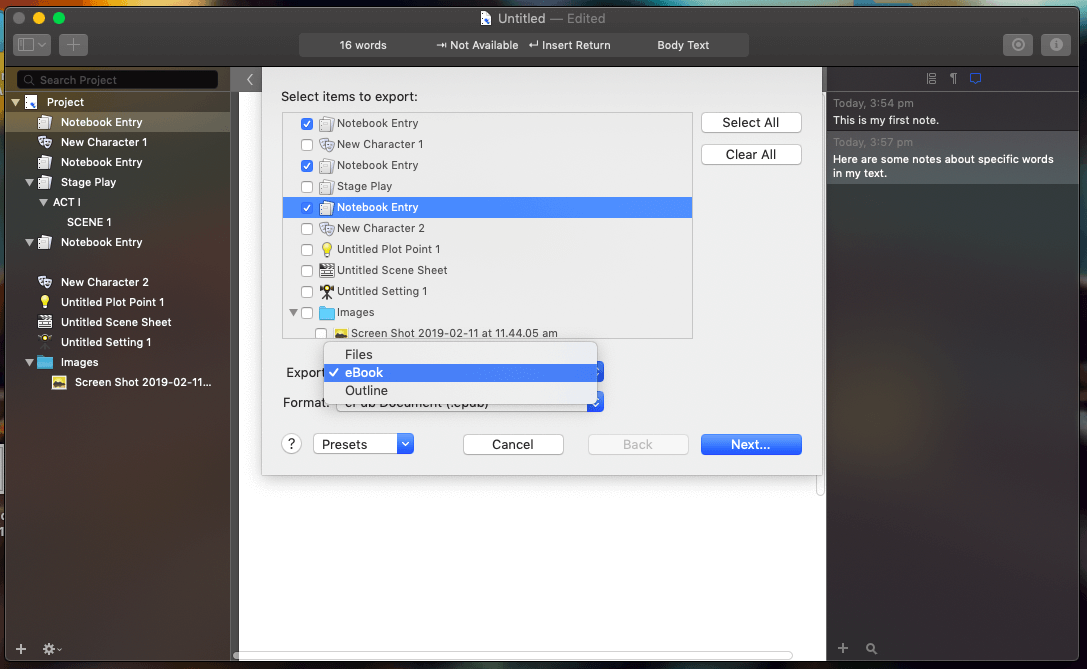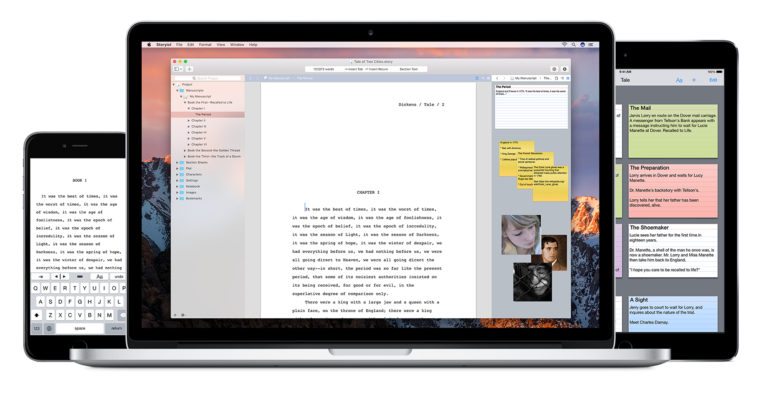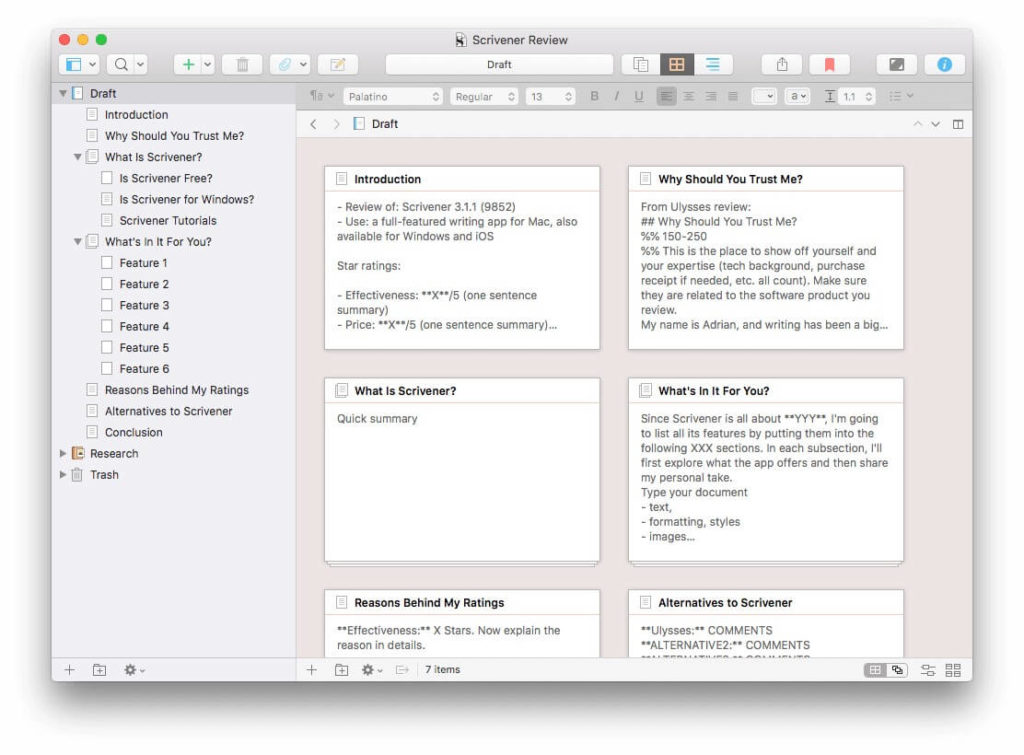

Storyist uses the iOS 8 document picker to import and export files.

Close Scrivener when working on your file on another device.Tables and strikethrough text formatting are not preserved when edited in Storyist. Storyist for iOS doesn’t support these features. You can, of course, create them in Scrivener and then sync it to your iOS device. Storyist for iOS doesn’t currently create Scrivener projects. Storyist does preserve all compile settings when editing a Scrivener file, so you’ll still be able to compile your manuscript in Scrivener. Storyist doesn’t require a compile step since most Storyist users keep their manuscripts in a single file and use heading-level styles to indicate chapters or scenes. However, all outline and index card information is preserved when you edit the file, and will be available to you when editing in Scrivener. Scrivener files don’t support outlining within a text file, so you won’t see file outlines or index cards in the project view like you will with Storyist, Final Draft, or Fountain files. Import and export files using iTunes, email, “send-to-app,” and the iOS 8 document picker.Add, reorganize, and delete items in the project (binder) view.Add and edit project (Scrivener) links.Storyist supports both draft mode and page mode and provides an inspector for font and paragraph formatting operations. Similarly, when you edit the files in your iCloud Drive folder using Scrivener, iCloud will sync them to the cloud and then to your devices.
Storyist vs scrivener 2015 mac#
ICloud will keep track of the changes you make in Storyist and sync them to the cloud and from there to your Mac or PC.

Storyist vs scrivener 2015 install#
Install Storyist 3.1 or later for iOS on your iPad or iPhone.Editing Scrivener Files with Storyist for iOSĪs of version 3.1, Storyist for iOS can edit Scrivener files in addition to Storyist, Final Draft, Fountain, RTF, and plain text files.


 0 kommentar(er)
0 kommentar(er)
